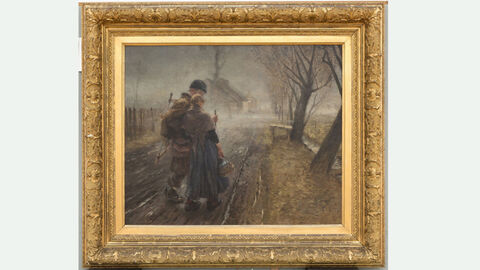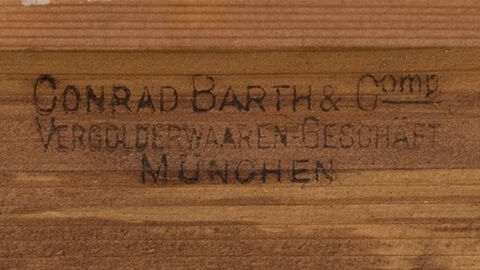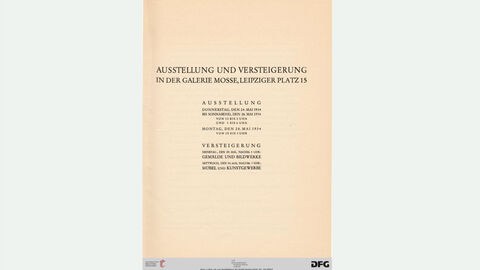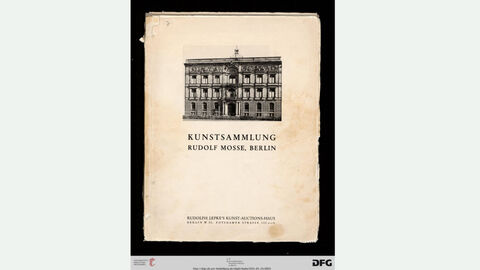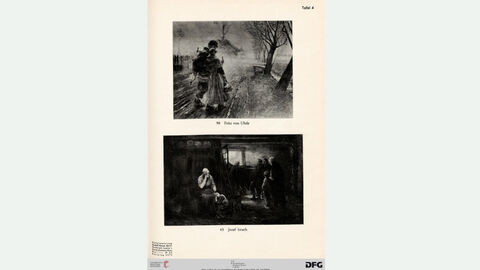“The Journey to Bethlehem” belongs to Fritz von Uhde’s group of religious works, in which the artist takes Biblical themes involving scenes from “everyday life” and places them in a contemporary context.
The landscape motif presented here is based on plein-air studies executed by the artist near the Moorkolonie Augustenfeld in Dachau. Starting in 1888, Fritz von Uhde stayed and worked several times there, executing a number of sketches of the village road that leads through Augustenfeld to Schleißheim. On this frozen road, a shabbily dressed couple moves forwards, away from the observer, through a bleak, barren winter landscape towards a group of humble dwellings, from whose windows a few faint orange-coloured lights shine.
The couple is portrayed from the rear, their heads slightly turned in profile. The man supports the obviously heavily pregnant woman with his right arm. He carries a rucksack and over his left shoulder a saw, identifying him as a carpenter. The picture’s title and the saw as an attribute of Joseph the Carpenter identify the scene as part of the well-known Christmas story in the Gospel of St. Luke, in which Mary and Joseph search in vain for a place to stay in Bethlehem before the birth of their son Jesus.
